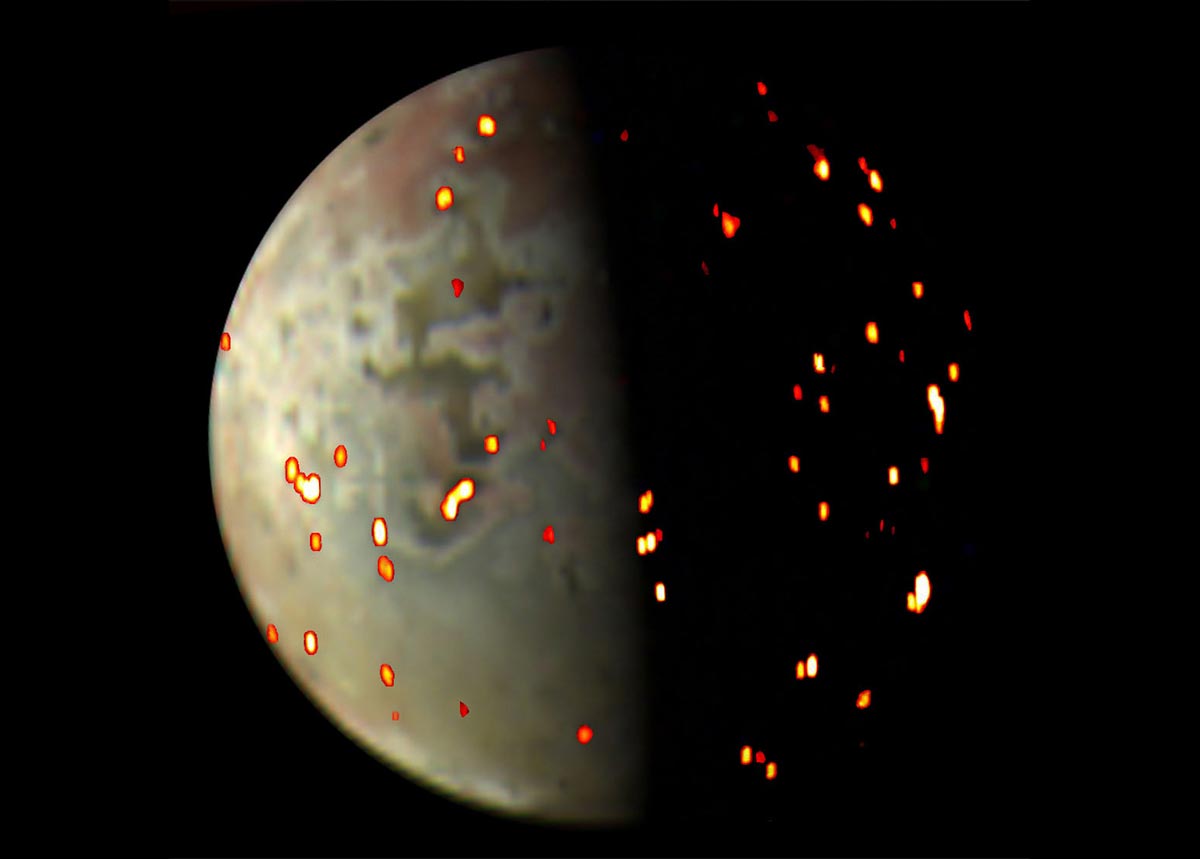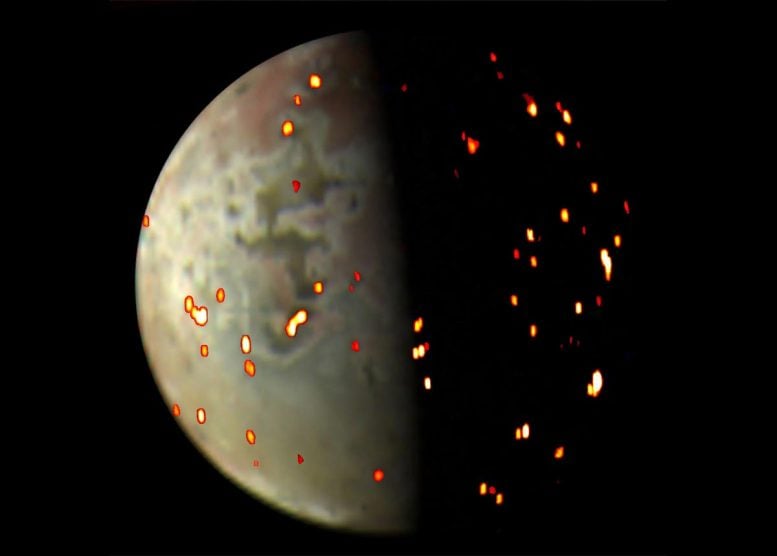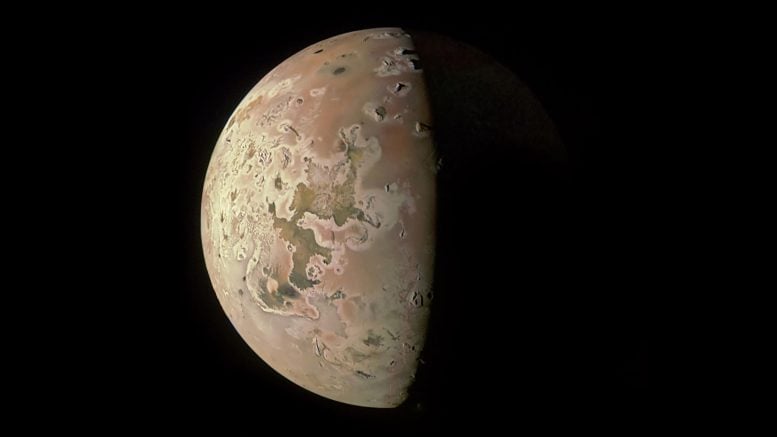

Researchers at Cornell University have leveraged the intense volcanic activity on Jupiter’s moon Io to advance our understanding of tidal heating, a crucial factor in the formation and evolution of planets.
By analyzing data from NASA’s Juno spacecraft, the team observed that the peculiar placement of volcanoes at Io’s poles, rather than at the equator, might play a significant role in the moon’s internal heat regulation. This study sheds light on the dynamic interactions within Io and offers insights into potential subsurface oceans on other moons, driven by similar heating mechanisms.
Tidal Heating on Io
Cornell University astronomers have explored tidal heating – a fundamental process in planetary formation and evolution – by examining the hellish volcanic landscape of Jupiter’s moon Io, the most volcanically active body in our solar system.
“Tidal heating plays an important role in the heating and orbital evolution of celestial bodies,” said Alex Hayes, professor of astronomy. “It provides the warmth necessary to form and sustain subsurface oceans in the moons around giant planets like Jupiter and Saturn.”
“Studying the inhospitable landscape of Io’s volcanoes actually inspires science to look for life,” said lead author Madeline Pettine, a doctoral student in astronomy.
Insights From Io’s Volcanic Activity
By examining flyby data from the NASA spacecraft Juno, the astronomers found that Io has active volcanoes at its poles that may help to regulate tidal heating – which causes friction – in its magma interior.
The research was published on September 7 in Geophysical Research Letters.

Volcanic Distribution and Interaction
“The gravity from Jupiter is incredibly strong,” Pettine said. “Considering the gravitational interactions with the large planet’s other moons, Io ends up getting bullied, constantly stretched and scrunched up. With that tidal deformation, it creates a lot of internal heat within the moon.”
Pettine found a surprising number of active volcanoes at Io’s poles, as opposed to the more common equatorial regions. The interior liquid water oceans in the icy moons may be kept liquefied by tidal heating, Pettine said.
In the north, a cluster of four volcanoes – Asis, Zal, Tonatiuh, one unnamed, and an independent one named Loki – were highly active and persistent with a long history of space mission and ground-based observations. A southern group, the volcanoes Kanehekili, Uta, and Laki-Oi demonstrated strong activity.
The long-lived quartet of northern volcanoes concurrently became bright and seemed to respond to one another. “They all got bright and then dim at a comparable pace,” Pettine said. “It’s interesting to see volcanoes and observing how they respond to each other.”
Reference: “JIRAM Observations of Volcanic Flux on Io: Distribution and Comparison to Tidal Heat Flow Models” by M. Pettine, S. Imbeah, J. Rathbun, A. Hayes, R. M. C. Lopes, A. Mura, F. Tosi, F. Zambon and S. Bertolino, 7 September 2024, Geophysical Research Letters.
DOI: 10.1029/2023GL105782
In addition to Pettine, Rathbun and Hayes, co-authors on this paper are Samara Imbeah ’21; Rosaly M. C. Lopes, Jet Propulsion Laboratory and an adjunct professor of astronomy at Cornell; Shannon Bertolino, Cornell researcher; and A. Mura, F. Tosi, F. Zambon, of INAF-IAPS, Rome. Hayes is also the director of the Cornell Center for Astrophysics and Planetary Science.
This research was funded by NASA’s New Frontiers Data Analysis Program and by the New York Space Grant.